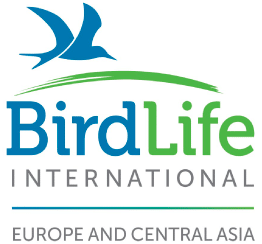European Roller
Category: Songbirds
Wingspan: 66-73 cm
Top speed: 48 km/h
Conservation Status: Least concern
The European Roller’s name comes from the rolling aerial acrobatics it performs during courtship or territorial flights. Territory is important for the European Roller – when on breeding ground, this monogamous bird will fiercely defend its territory with its mating partner. And within it, they will use pre-existing holes in large trees, buildings, cliffs or riverbanks as their nests. Suitable nesting cavities aren’t always easy to find: the forestry industry does not tolerate trees with holes and burrows, and the decline in bigger woodpecker species also means fewer holes are pecked.
If a chick finds itself alone in the nest, and has to defend itself against a predator, it will do so in a peculiar manner: it will vomit a foul-smelling orange liquid onto its own body to deter the attacker. The smell also warns the parents about what happened once they return. This off-putting technique contrasts quite starkly with the beauty of the European Roller’s plumage. Its stunning turquoise feathers are sure to catch your gaze.
The European Roller inhabits a wide variety of habitats, avoiding only treeless plains. You can often find it sitting high up in the air on branches or power lines, surveying the ground for potential prey. Their diet consists mostly of large insects such as beetles and crickets, but they also eat also small reptiles, rodents and frogs.
It migrates vast distances between continents. From the breeding grounds of Europe and Asia, it flies over 10,000 kilometres to its wintering grounds in Sub-Saharan Africa. If you have the opportunity, you must catch a glimpse of its spectacular northward flight along the east African coast in early spring.
Although the European Roller’s conservation status was recently downlisted from ‘near threatened’ to ‘least concern’ in 2015, its populations are in decline – especially in Europe. Between 1990 and 2000, the European population declined by 25%. It has even gone extinct as a nesting bird in Sweden and Germany. It is on the verge of extinction in the Baltic states and in Poland, where only 30 pairs remain, despite being a relatively common sight not so long ago. In 2017, BirdLife Hungary developed a Species Action Plan to address this bird’s severe declines1. The European Roller faces many threats: the degradation of its natural habitat by intensive agriculture, illegal shooting across its migration routes, as well as illegal capturing for pet trafficking.
For more information on the legislation covering this species, as well as maps and research, check out http://datazone.birdlife.org/species/factsheet/european-roller-coracias-garrulus.
1.The Flyway Action Plan for the European Roller (Coracias garrulus) Draft 2.0 version of 24May 2017 UN Convention on Migratory Species. Prepared by: BirdLife Hungary (MME): https://www.cms.int/sites/default/files/document/cms_cop12_doc.24.1.9_european-roller-action-plan_e_.pdf
Threats
- Illegal shooting
- Illegal trade



